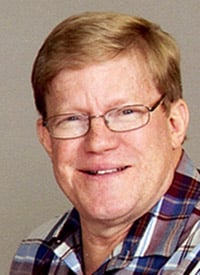
Sunday night services meant our church’s youth choir sat in the choir loft to sing and stay visible throughout the rest of the service.

Ken Satterfield
Once, a friend’s father complained to my parents afterwards over my behavior. While I will freely admit I have done many things over the year that could (kindly) be described as disruptive, this one was completely innocent.
Brace yourself: I combed my hair during the closing prayer.
Assuming everyone had their eyes closed – a discussion point for our family afterwards – I thought no one would notice. And to be honest, I was a little irritated that it bothered him so much.
But if you’ve looked through a camera eyepiece or used your phone to shoot a picture or video, it’s much the same: you only see a very small slice of your surroundings. That (literal) tunnel vision helps explain why more than 250 people globally have died taking selfies between 2011 and 2017.
The perspective of life seen through a lens makes for good life lessons:
Little things can get magnified out of proportion. Producing videos and operating a church camera, I’ve learned to consider the background. In worship, the person behind a speaker chewing gum, laughing, whispering to someone else, looking around during a prayer, or being inattentive capture attention. Do you remember the interest in the “plaid shirt guy’s” expressions at a Montana rally for President Trump (tinyurl.com/MAF-1119-1)?

Pixabay
Little things can ruin a moment. Stuff really does happen during prayers (besides combing). To maintain the service flow, people may move around. Or, the person praying adjusts their clothing or their belongings. It is especially noticeable when watching a recording. Similarly, close-ups of bored or frowning singers during a moving piece of music can distract from its message, perhaps best illustrated by Mr. Bean in a classic sketch (tinyurl.com/MAF-1119-2).
Assumptions affect our perception. It is human nature to try to fill in what we don’t know.
I recall a mission service I needed to stage once for a video and made four heads look like a roomful of people from the shooting angles I used when it was viewed later. “Broken India” is a series of attractive travel images cropped from landscapes showing the surrounding poverty and pollution (tinyurl.com/MAF-1119-3).
But this can be beneficial. Sans Forgetica (sansforgetica.rmit) is a typeface made up of incomplete letters, scientifically designed to aid memory retention as our minds fill in what’s missing (tinyurl.com/MAF-1119-4). (You’ll read this in the following verse.)

It’s a good reminder to avoid the distractions of “eyepiece vision,” that causes us to get stuck on the little things so we don’t see the whole picture.
Or, be that distraction for others.
Ken Satterfield is a former media specialist and current marketing coordinator for Word&Way. And yes, his hair is combed.



